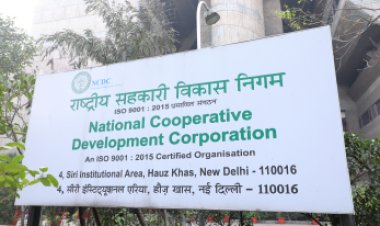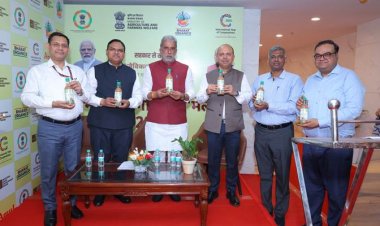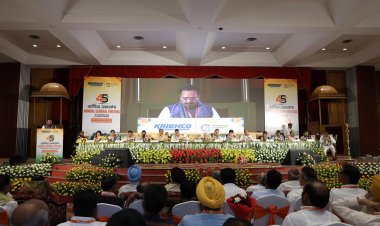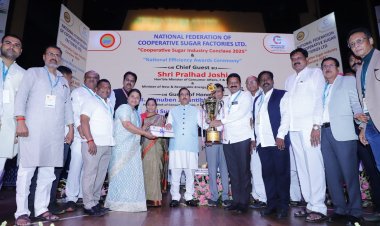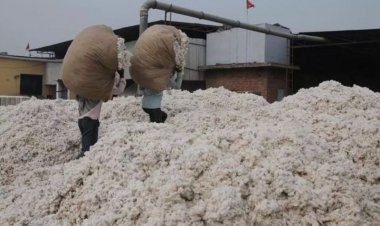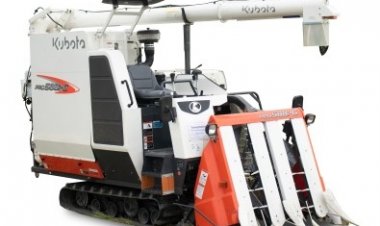How cooperative is transforming agriculture sector
role of cooperative, agriculture sector, agri crisis, modi government
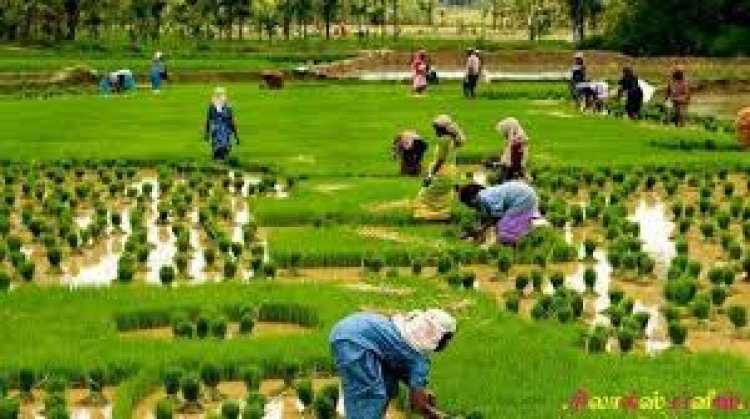
Indian agriculture is primarily characterised with low per acre/farmer productivity, unfavourable terms of trade between farm and non-farm sector and prevalence of small and marginal farm holdings. A significant portion of the agriculture output in the country is produced by the small and marginal farmers lacking easy access to the resources required for efficient and viable production. This tends to not only constrict their individual growth but also hampers the growth of the agriculture sector with which they are interdependent. In order to achieve growth and reduce vulnerability, farmers need access to a range of resources and services such as credit, insurance, equitable and easy access to inputs and market, seamless and barrier less connectivity between policy makers, agriculture research institutions and farmers.
In India, a “supply-leading approach” to the institutional development for agriculture sector has been followed. However, this approach has not been successful in meeting the complete needs of farmers and also the consumers. This approach is based on the presumption that whatever is planned at the top will trickle down to all concerned in a fair and equitable manner. But this is not true because we have genuinely not recognised the fact that in absence of farmer owned and controlled institutional framework it will be very difficult to directly more than 300 million cultivators in the country. Access of vast majority of farmers to market, information and knowledge institutions and formal financial services is still woefully inadequate and appropriate and affordable products and services are very scarce. These impediments restrict the capacity of farmers and retard their process of growth.
The way forward?
Agriculture impacts and gets impacted by the entire spectrum of activities that one can visualize in the rural space. Agricultural growth and well being are the engines of growth for the non-farm sector as well. The key to farmer’s prosperity – and the prosperity of the entire nation – depends critically on transforming and rejuvenating agriculture. Not only is it a major segment of our economy, but more significantly it is also the provider of gainful employment and incomes to the maximum number of people. Overall, an enormous potential exists for the rapid growth of rural economy on the basis of this country being endowed with abundant arable land, favourable seasonal conditions and shifting consumption patterns – driven by increasing income levels. The impact of agricultural growth on farmer empowerment is apparent. It estimated that one incremental percentage growth in agriculture leads to an additional income generation of around Rs. 75,000 crore in the hands of the farmers thereby increasing their disposable income and ultimately, their purchasing power. Owing to diverse and favourable agro-climatic conditions, India has a significant competitive advantage in agricultural production and the potential to be globally competitive by producing wide-variety of high value and quality produce. These advantages if leveraged optimally can translate into India becoming a leading food supplier to the world. Further, with a population of more than one hundred thirty crores and with favourable demographics, India is a large consumption hub for food products.
Improving the viability of farm economics assumes critical importance to gainfully engage the large segment of population within the rural space. Transferring maximum share of the price received from the ultimate consumer to the primary producer has to be ensured to incentivize the farmers to produce with efficiency. Otherwise, tapering off of the interest of farmers in agricultural activity may set in which will be too depressing and damaging for the Indian economy. Provision of robust and efficient infrastructure at a level that will allow the development of a strong and productive agricultural sector is sine-qua-non for development of agrarian economy.
However, ushering in direct corporate- farmer interface through legislative reforms as is being touted now are neither practically feasible / possible nor financially viable solution for addressing the problems faced by the farmers of our country. Rather, empowerment, participation and inclusion have to be central to our approach for addressing the problems plaguing agriculture and rural economy of India. Group based approaches including cooperatives and other forms of farm collectives are actually the key organizational forms for building new and viable models for agriculture development, and the country has long drawn on the strength of such movement.
The goals of cooperatives and farmer collectives have been to enable rural people to improve their economic conditions by working together in ways that are more productive than working individually. This tradition has promoted the spread of core values like democratic functioning, professionalism, local economic and social development and entrepreneurship creating important social capital at the community level. However, these core value system are mostly on decline and cooperatives are functioning more like a Government controlled entities.
There is a need to restore the democratic character of cooperatives both in management and business process. Restoration of undisrupted democratic management with the involvement of the elected members with full authority and freedom would facilitate cooperatives to function effectively in a true cooperative spirit. The cooperatives should also work like professional organisations on sound managerial systems in tune with the needs of the time, taking care of future projections of requirements, to retain and improve their market share and identity in the long run.
Cooperatives have both defensive and proactive purposes. Defensive purpose is focused on protecting small producers from unfair competition and helping to keep them on the land. Proactive purpose is to respond to new business opportunities as new markets open or when government sponsored activities are discontinued or privatized. Proactive cooperatives adapt to survive, which means continued benefits to members through the patronage and investment of all members. These innovative and successful cooperatives have found new ways of interpreting or applying cooperative principles that make it worthwhile for their members both to use and to invest. To be successful, the cooperatives have to come up with a variety of innovative ways to address the dual roles of the cooperative member as user and as investor.
Cooperatives become more complex as they grow and respond to competition. At the same time, members become more demanding, as freer and more efficient markets increase their opportunities. These changes challenge traditional mechanisms of solidarity, and require the adoption of new financial strategies that encourage members to patronize the cooperative and become involved in democratic decision-making in its business operations.
The cooperative institutions were conceptualized as a self -reliant system based on the principle of ‘vertical integration’. But these institutions have moved away from this system to ‘horizontal reliance’. This trend has to be reversed to restore the cooperatives to its original place of prominence and eminence. Time has come to have a fresh examination of the structure of cooperative institutions with reference to its relevance and efficacy.
The cooperative institutions with a huge network more than 8 lakh units in the country can be integrated and networked under some appropriate institutional arrangement to leverage their strength and address the weakness that they are facing when working in isolation. Such arrangement of systemic integration can address the issue of designing and operating one common digital platform, common professional management development system, and efficient fund management. All the cooperative institutions while retaining their functional and management autonomy can for all practical purpose work like one unified entity. This arrangement can give them the benefit of size and operations because as a holding entity this will be the largest business network connecting entire human and physical resorces in the country.
(Writer is former Deputy Managing Director, National Cooperative Development Corporation)



 Join the RuralVoice whatsapp group
Join the RuralVoice whatsapp group

















